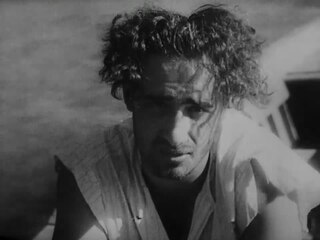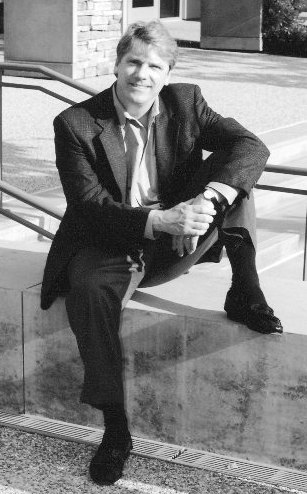
Dada or Dadaism was an art movement of the European avant-garde in the early 20th century, with early centres in Zürich, Switzerland, at the Cabaret Voltaire, founded by Hugo Ball with his companion Emmy Hennings, and in Berlin in 1917. New York Dada began c. 1915, and after 1920 Dada flourished in Paris. Dadaist activities lasted until the mid 1920s.

In the arts and in literature, the term avant-garde identifies a genre of art, an experimental work of art, and the experimental artist who created the work of art, which usually is aesthetically innovative, whilst initially being ideologically unacceptable to the artistic establishment of the time. The military metaphor of an advance guard identifies the artists and writers whose innovations in style, form, and subject-matter challenge the artistic and aesthetic validity of the established forms of art and the literary traditions of their time; thus how the artists who created the anti-novel and Surrealism were ahead of their times.

Beatrice Wood was an American artist and studio potter involved in the Avant Garde movement in the United States; she founded and edited The Blind Man and Rongwrong magazines in New York City with French artist Marcel Duchamp and writer Henri-Pierre Roché in 1917. She had earlier studied art and theater in Paris, and was working in New York as an actress. She later worked at sculpture and pottery. Wood was characterized as the "Mama of Dada".

Experimental film or avant-garde cinema is a mode of filmmaking that rigorously re-evaluates cinematic conventions and explores non-narrative forms or alternatives to traditional narratives or methods of working. Many experimental films, particularly early ones, relate to arts in other disciplines: painting, dance, literature and poetry, or arise from research and development of new technical resources.

Henri-Pierre Roché was a French author who was involved with the artistic avant-garde in Paris and the Dada movement.
Walter Conrad Arensberg was an American art collector, critic and poet. His father was part owner and president of a crucible steel company. He majored in English and philosophy at Harvard University. With his wife Louise, he collected art and supported artistic endeavors.

Tyrus Wong was a Chinese-born American artist. He was a painter, animator, calligrapher, muralist, ceramicist, lithographer and kite maker, as well as a set designer and storyboard artist. One of the most-influential and celebrated Asian-American artists of the 20th century, Wong was also a film production illustrator, who worked for Disney and Warner Bros. He was a muralist for the Works Progress Administration (WPA), as well as a greeting card artist for Hallmark Cards. Most notably, he was the lead production illustrator on Disney's 1942 film Bambi, taking inspiration from Song dynasty art. He also served in the art department of many films, either as a set designer or storyboard artist, such as Rebel Without a Cause (1955), Around the World in 80 Days (1956), Rio Bravo (1959), The Music Man (1962), PT 109 (1963), The Great Race (1965), Harper (1966), The Green Berets (1968), and The Wild Bunch (1969), among others.

Frederic Remington: The Truth of Other Days is a 1991 documentary film of American Western artist Frederic Remington made for the PBS series American Masters. It was produced and directed by Tom Neff and written by Neff and Louise LeQuire. Actor Gregory Peck narrated the film and Ned Beatty was the voice of Remington when reading his correspondence.

Thomas Linden Neff -, known as Tom Neff, is an American film executive, director and producer, born in Chicago, Illinois. He lives in Nashville, Tennessee.

Clarence Alexander Avant was a prominent American music executive and film producer. Originating from Climax, North Carolina, Avant began his professional journey in the 1950s, managing Teddy P's Lounge in Newark, New Jersey. Under the guidance of Joe Glaser, a notable music manager of the era, Avant managed a diverse portfolio of artists, ranging from R&B talents like Little Willie John to jazz figures such as Jimmy Smith. In the 1960s, he founded Avant Garde Enterprises, marking a significant step in his contributions to the music sector.
Su Friedrich is an American avant-garde film director, producer, writer, and cinematographer. She has been a leading figure in avant-garde filmmaking and a pivotal force in the establishment of Queer Cinema.
Arthur Dong is an American filmmaker and author whose work centers on Asia America and anti-gay prejudice. He was raised in San Francisco, California, graduating from Galileo High School in June 1971. He received his BA in film from San Francisco State University and also holds a Directing Fellow Certificate from the American Film Institute Center for Advanced Film Studies. In 2007, SFSU named Dong its Alumnus of the year “for his continued success in the challenging arena of independent documentary filmmaking and his longstanding commitment to social justice."

Red Grooms: Sunflower in a Hothouse is a 1986 short film biography of the Nashville-born artist Red Grooms. It was written by Tom Neff, co-directed by Neff and Louise LeQuire, and produced by Neff and Madeline Bell. The film was funded by the Tennessee State Museum and was nominated for an Academy Award for Documentary Short Subject.

Barry Rubinow is a film executive and editor, born in Glen Rock, New Jersey, a suburb of New York City. Currently, he lives in West Hills, Los Angeles, California.
Betzy Bromberg is an American director, editor, and experimental filmmaker. She was the Director of the Program in Film and Video at California Institute of the Arts, and remains in the position of full time Faculty. Her work has been shown at the Rotterdam, London, Edinburgh, Sundance and Vancouver Film Festivals as well as the Museum of Modern Art, Museum of Fine Arts, Boston, the San Francisco Cinematheque, the Harvard Film Archive (Cambridge), Anthology Film Archives, the National Film Theater (London), The Vootrum Centrum (Belgium) and the Centre Georges Pompidou (France).
Marion "Muffie" Meyer is an American director, whose productions include documentaries, theatrical features, television series and children’s films. Films that she directed are the recipients of two Emmy Awards, CINE Golden Eagles, the Japan Prize, Christopher Awards, the Freddie Award, the Columbia-DuPont, and the Peabody Awards. Her work has been selected for festivals in Japan, Greece, London, Edinburgh, Cannes, Toronto, Chicago and New York, and she has been twice nominated by the Directors Guild of America.

Juliette Roche (1884–1980), also known as Juliette Roche Gleizes, was a French painter and writer who associated with members of the Cubist and Dada movements. She was married to the artist Albert Gleizes.

Phillip Rodriguez is an American documentary filmmaker and veteran content provider for PBS.
Judith Dwan Hallet is an American documentary filmmaker.
Steven Watson is an author, art and cultural historian, curator, and documentary filmmaker.















